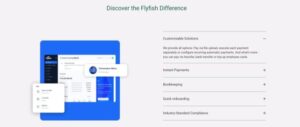Leveraged and Inverse ETFs: Amplifying Market Moves

In the dynamic world of financial markets, Exchange-Traded Funds (ETFs) have emerged as popular instruments for investors seeking exposure to various asset classes. Leveraged and inverse ETF stand out for their ability to amplify market moves. This article explores the intricacies of leveraged and inverse ETFs, understanding their mechanics, advantages, risks, and considerations investors need to bear in mind.
Table of Contents
Understanding Leveraged ETFs
Leveraged ETFs are financial instruments designed to magnify the returns of an underlying index or benchmark. These ETFs use financial derivatives and debt instruments to achieve leverage, aiming for double or triple the daily performance of the tracked index.
Leveraged ETFs are structured to track a specific index or benchmark. The goal is not to deliver double or triple the annual return but to achieve that multiple daily. The compounding effect over time can lead to variations in returns compared to the multiplied performance of the index.
Leveraged ETFs come in various ratios, such as 2x or 3x leverage. A 2x leveraged ETF seeks to provide double the daily return of the underlying index, while a 3x leveraged ETF aims for triple the daily return. While these ratios amplify potential gains but expose investors to heightened risks.
The magnification of returns in favourable market conditions can be enticing for investors. However, it’s crucial to understand that adverse situations also multiply losses. Investors must carefully assess their risk tolerance and investment horizon before incorporating leveraged ETFs into their portfolios.
Exploring Inverse ETFs
Definition and Functionality
Inverse ETFs operate inversely to the performance of their underlying indices. These ETFs are designed to provide returns that move opposite to the benchmark they track. Inverse ETFs are commonly used for hedging purposes and risk mitigation.
Inverse ETFs are structured to profit from declining markets. For example, if an index drops by 1%, a 1x inverse ETF would aim to generate a 1% positive return. This inverse relationship provides a valuable tool for investors looking to protect their portfolios during market downturns.
Inverse Ratios
Inverse ETFs also come with different ratios, including single inverse (1x), double inverse (2x), or triple inverse (3x). These ratios amplify the inverse relationship with the tracked index. However, inverse ETFs entail risks and considerations that investors should carefully weigh, similar to leveraged ETFs.
Investors often consider using inverse ETFs when they anticipate market downturns or corrections. The ability to profit from falling markets can serve as a hedge against broader portfolio losses. However, the effectiveness of inverse ETFs depends on the correlation with the specific market trends they aim to counteract.
Pros and Cons of Leveraged and Inverse ETFs
Advantages
Leveraged ETFs can offer enhanced returns during periods of market growth. Investors with a high-risk tolerance and short-term investment horizon may find these instruments appealing.
Inverse ETFs offer investors a valuable tool for hedge against market downturns. During times of economic uncertainty, holding inverse ETFs can offset losses in traditional investments, providing a level of risk mitigation.
Disadvantages
Leveraged ETFs magnify losses in declining markets. Investors who fail to understand the compounding effect may experience significant setbacks, especially when holding these instruments for an extended period.
Both leveraged and inverse ETFs involve compounding risks. Over time, the daily resetting of leverage can lead to tracking errors and unexpected deviations from expected returns. This compounding effect is a crucial consideration for investors.
Risks Associated with Leveraged and Inverse ETFs
Leveraged and inverse ETFs may experience increased volatility and tracking errors, especially during high market turbulence. The daily resetting of leverage can result in deviations from expected returns. Investors should closely monitor the tracking performance of leveraged and inverse ETFs. Variations between expected and actual returns may occur due to market illiquidity and the compounding nature of daily resets.
While leveraged and inverse ETFs are designed for short-term trading or tactical strategies, holding these instruments over the long term can result in unexpected outcomes. The compounding effect can lead to deviations from the expected multiple of returns.
Regulatory Environment and Disclosure
The Securities and Exchange Commission (SEC) regulates leveraged and inverse ETFs, imposing specific disclosure requirements. Investors should carefully review the prospectus and other regulatory filings to understand the fund’s objectives, risks, and fees.
Regulators and financial institutions emphasise investor education initiatives to ensure that individuals using leveraged and inverse ETFs understand these complex instruments. Educated investors are better equipped to make informed decisions aligned with their financial goals.
Considerations for Novice Investors
Novice investors should leverage educational resources to understand the characteristics of leveraged and inverse ETFs. These resources may include online courses, articles, and educational platforms from reputable financial institutions.
Before engaging in live trading with leveraged and inverse ETFs, novice investors can benefit from simulation and paper trading platforms. These tools allow individuals to practice trading strategies risk-free, gaining valuable experience without real financial exposure.
Conclusion
Leveraged and inverse ETFs offer unique opportunities for investors to amplify or hedge against market moves. However, these instruments have inherent risks and complexities that require careful consideration.
Investors should align their use of leveraged and inverse ETFs with their risk tolerance, investment horizon, and overall portfolio objectives. Through informed decision-making, ongoing education, and a balanced approach, investors can confidently navigate the dynamic landscape of leveraged and inverse ETFs.





